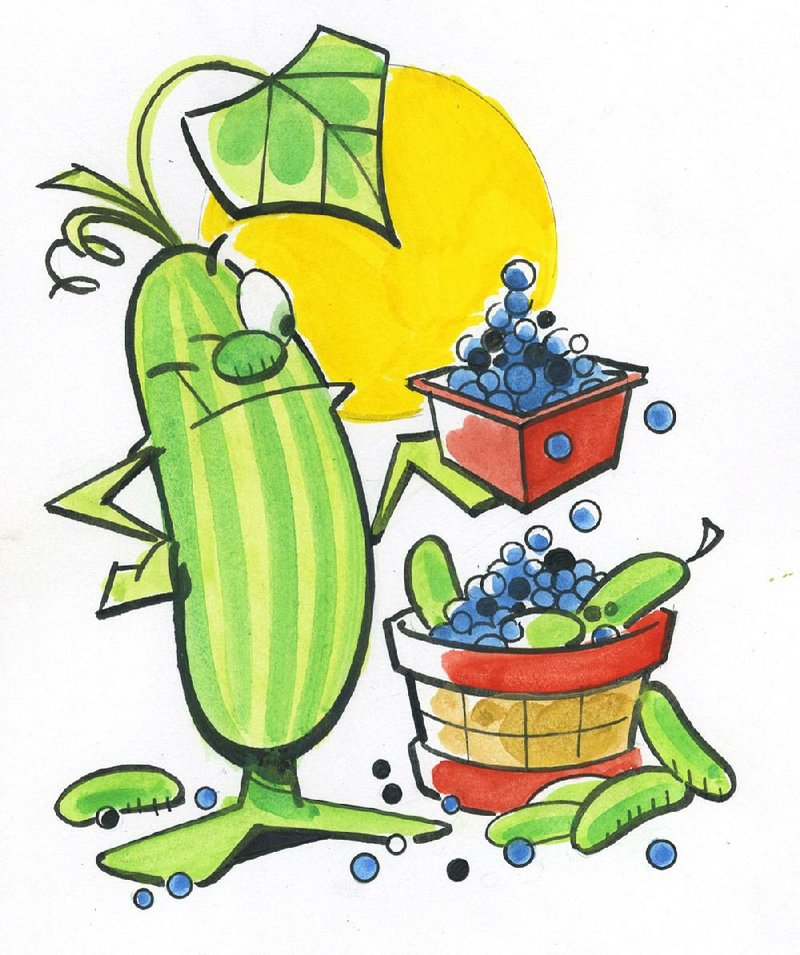Q When is the best time to grow cucumbers and blueberries?
A Blueberries are permanent plants in the garden. Right now you should find a good selection of varieties at nurseries and garden centers. For best production, it is usually good to plant two different varieties together. Make sure they get full sun and even moisture. Like azaleas, they need acidic soil. Depending on variety, harvest season is usually late May through mid-July. For cucumbers and other warm-season vegetables, mid-April is the beginning of planting season. Many people got a little eager this year and planted in mid-March, and they are regretting the decision since many plants were nipped back by frost. Even if plants aren't killed, if they are exposed to really low temperatures it can limit their overall growth this season. Be patient and let the soil and air warm up before planting. Warm-season vegetables can be planted from mid-April through early June and then again in late summer for a fall harvest.
Q Thank you for your efforts in fighting crape murder and volcano mulching -- both noble causes. I'm also concerned about the low cutting heights used for the lawns in MacArthur Park. Is there any reason why they cut the grass so low? It would seem that a greater height would allow for more water retention and soil development. And it would reduce mowing costs. As it is right now, the lawns are showing lots of clay.
A For years people felt the need to scalp their lawns in the spring to get rid of winter weeds and dead growth and to encourage new growth. Scalping is not good for the lawn. Mowing at a slightly lower setting for the first mowing to remove debris is OK, but low mowing (cutting back to 1 to 1 ½ inches) and scalping -- where you can see bare ground -- are quite different. After the first mowing, keeping the lawn mown to a height of 2 to 3 inches can produce a stronger root system, and help to shade the soil. When we have thin turf, we have more weed competition, and you will need to mow and water more often.
Q I live in Northwest Arkansas. About four years ago we planted two rhododendron plants in our yard. One is on the west side of the house and gets no morning sun but filtered afternoon light. The other is on the north side of the house in a bed and receives morning sun but shade in the afternoon. They both have grown, and last year each one bloomed. However, the foliage of the one on the north has been a pale green since about the first year. They both have buds now, so I expect both will bloom. Both have been fed with acid-loving-plant fertilizer each spring (after blooming last year). The one on the north is sickly looking but continues to grow and bloom. I have turned in a soil specimen for exam but have not yet received results. I'm wondering if too much sun could be the problem. In the past, all soil samples have been on the acid side, which I thought would be good.
A Rhododendrons do need a very acidic soil. If the pH is too alkaline (too high) it can lead to yellowing leaves, but the veins typically are green. See what the results of your soil sample look like. I would think morning sun would be fine for the rhododendrons. They struggle in hot, dry summers, but they typically need morning sun or filtered sunlight to set flower buds. Are they both planted shallowly? Is drainage the same? Rhododendrons like a well-amended and well-drained soil. If they are planted too deep or if the soil retains too much moisture, they can struggle. If they are setting flower buds, I would say they are getting some of the conditions needed for growth. After bloom, fertilize and see how they do.
Q I have a 2-by-25-foot bed that is well drained and gets some shade on the west and east. I have not tested the soil. I would like to plant two buckeye plants. Do you have a source? I also would like to plant for butterflies. Any suggestions?
A If you want to plant buckeyes from seed, you will have to wait until fall, since they lose viability very quickly after harvest. They are also readily available as plants from nurseries. I was at Garvan Woodland Gardens in Hot Springs recently, and they were selling seedlings. There are many plants that attract butterflies. Some of the more important species include milkweeds, asters, Echinacea, spicebush and Joe Pye weed. Butterflies prefer bright red and purple blooms but will go to other colors. They like flowers with a wide landing area and a narrow tube leading to nectar. A butterfly garden needs more than nectar flowers: The adult butterfly needs places to lay eggs, food plants for larvae (caterpillars), and places to form chrysalides.
Janet B. Carson is a horticulture specialist for the University of Arkansas Cooperative Extension Service. Write to her at 2301 S. University Ave., Little Rock, Ark. 72204 or email her at
jcarson@arkansasonline.com
HomeStyle on 04/09/2016
